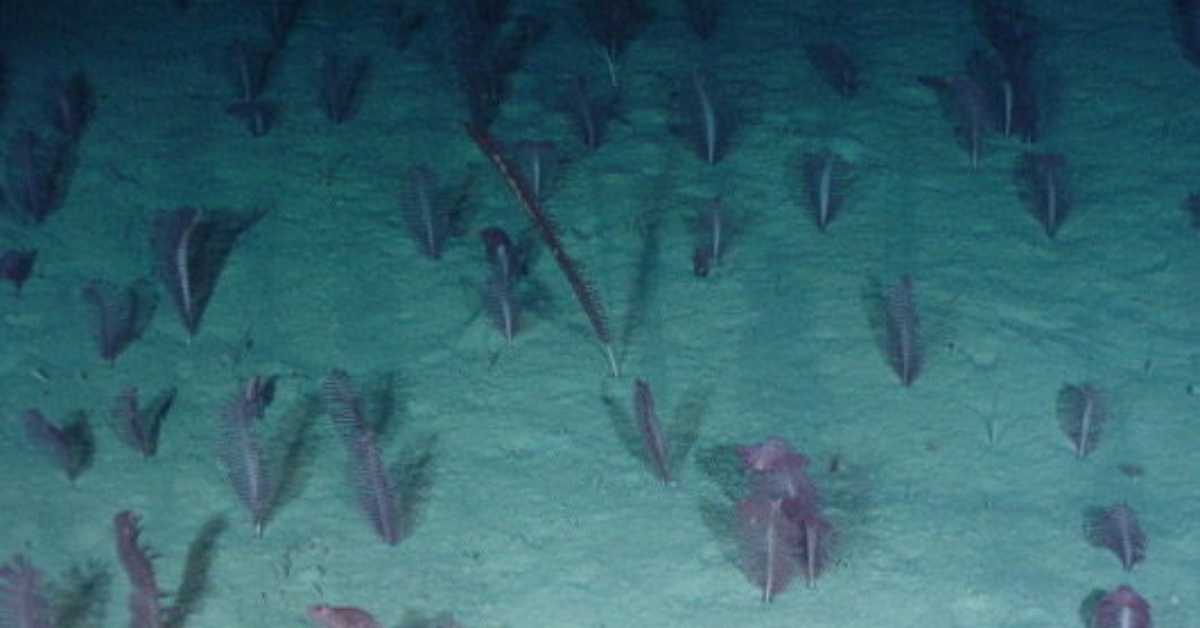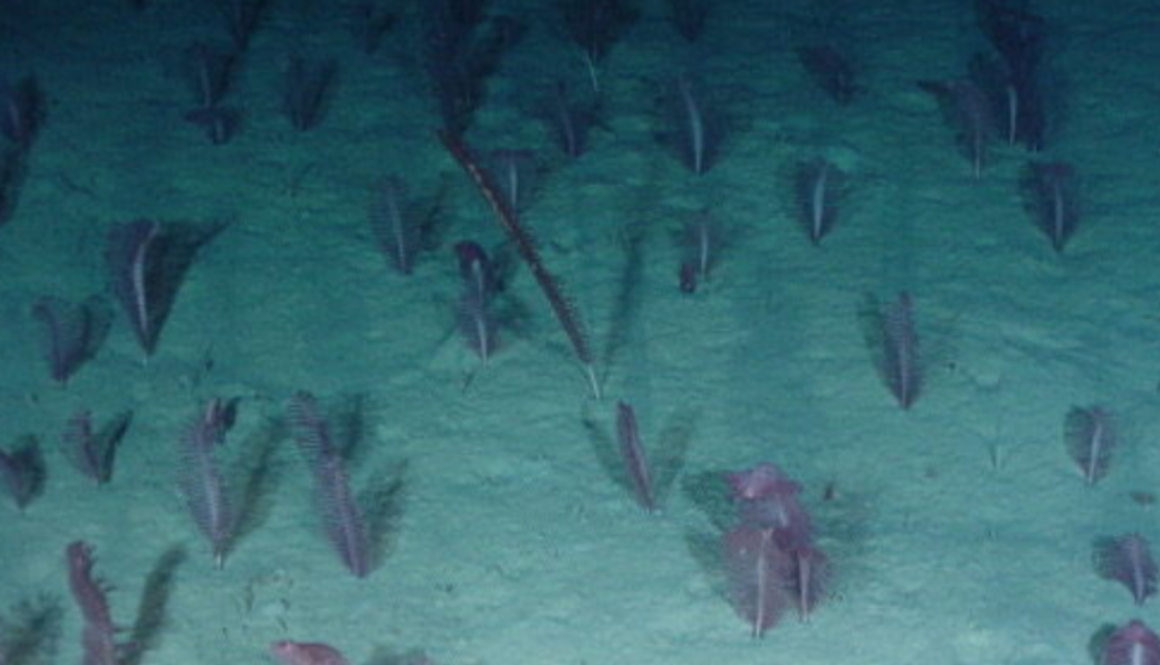New Oil Exploration License Threatens Protection of Atlantic Canada’s Largest Marine Refuge
The Canadian Parks and Wilderness Society (CPAWS) is deeply concerned by the announcement that BP has been granted an exploratory license to drill for oil in the Northeast Newfoundland Slope “Marine Refuge.”
Exploratory oil and gas leases will now cover roughly one-quarter of the Northeast Newfoundland Slope Marine Refuge. This is in stark contrast to the strict prohibitions on bottom contact fishing, including bottom trawling, which are prohibited throughout the site to protect cold-water corals and sponges.
The Northeast Newfoundland Slope Closure was designated as a “Marine Refuge” by the Department of Fisheries and Oceans (DFO) in 2017 to protect slow-growing, fragile cold-water corals and sponges that provide essential habitat for fish. At over 55,000 square kilometres, it is Atlantic Canada’s largest Marine Refuge and has made a significant contribution towards Canada reaching its goal of protecting 10% of marine and coastal areas by 2020.
“Drilling for oil and gas would destroy corals at the drill site and kick up sediments that smother corals and sponges over a large area,” said Tanya Edwards, Executive Director of CPAWS Newfoundland and Labrador Chapter. “Any infrastructure on the seafloor like rigs or anchors would also damage corals and sponges and oil leaks at the drill site would be devastating.”
In addition to direct damage from drilling, the seismic surveys used to find oil and gas deposits involve the use of high-intensity sounds which have been shown to affect everything from whales to plankton. Once in production, an oil rig poses numerous threats to marine life including chronic and catastrophic oil spills.
“Not only will this ecosystem suffer irreparable harm if oil and gas activities are allowed, but it is a double standard to ban bottom fishing activities while opening up the area to oil and gas. There needs to be comprehensive, equitable protection,” said Edwards. “The fishing community has recognized the value of this area and agreed to protect this important habitat – we want to see the oil and gas industry do the same.”
In 2019, Canada announced that it had protected almost 14% of its ocean, and recently committed to increasing its protection target to 30% of its ocean by 2030. “Marine Refuges” (or “Other Effective Conservation Measures” as they are also known) currently make up about 5% of the total area protected.
Canada also announced minimum standards for marine protected areas in 2019 which include the prohibition of all oil and gas activities. However, these standards do not currently apply to Marine Refuges. “This is despite the fact that they are intended to provide the same level of protection and biodiversity benefits as marine protected areas,” said Alex Barron, National Director of CPAWS’ Ocean Program.
Scientific studies recommend protecting at least 30% of the ocean and as much as 50-70% to restore ocean health. “But we can’t just draw lines on maps. We also need to make sure that all of those sites have effective protection in place, which means no oil and gas,” said Barron.
Background:
- Evidence shows that at least 30%, and as much as 70% or more, of ecosystems need to be conserved to reverse nature’s decline and safeguard a healthy planet for people and nature. This is consistent with CPAWS’ long-standing goal of protecting at least half of Canada’s public land, freshwater, and ocean.
- In June 2019, Canada joined the Global Ocean Alliance and committed to protect 30% of its ocean by 2030. In September 2020, Canada joined the High Ambition Coalition (HAC) for Nature and People and reiterated this commitment.
- According to the International Union for Conservation of Nature (IUCN), Other Effective Area-Based Conservation Measures (OECMs) or Marine Refuges may be managed for many different objectives but they must deliver effective conservation. Allowing oil and gas development does not meet international guidance/criteria for what areas can be counted towards the goal of protecting 10% of marine and coastal areas by 2020. As defined by the The Convention on Biological Diversity (CBD) an OECM is:
“A geographically defined area other than a Protected Area, which is governed and managed in ways that achieve positive and sustained long-term outcomes for the in situ conservation of biodiversity, with associated ecosystem functions and services and where applicable, cultural, spiritual, socio–economic, and other locally relevant values.”
- Much like parks on land, marine protected areas, designed and managed properly, can serve as refuges for marine life, enhance ocean resilience, and act as an insurance policy for fisheries management. Recent studies show that protecting 30% of our ocean in effective and well-managed MPAs can restore ocean health and produce an economic return on investments of 10:1.
- A 2019 analysis by SeaBlue Canada, an alliance of ENGOs working on marine protection in Canada, noted significant weaknesses in protection for many of Canada’s OECMs, in particular for oil and gas activities, and made a number of recommendations to strengthen protections.
- For more information:
- Northeast Newfoundland Slope Marine Refuge https://www.dfo-mpo.gc.ca/oceans/oeabcm-amcepz/refuges/northeastnewfoundlandslope-talusnordestdeterreneuve-eng.html
- Canada-Newfoundland Offshore Petroleum Board announcement of exploration license https://www.cnlopb.ca/news/nr11042020/
- Canada’s Commitment to Minimum Protection Standards https://www.dfo-mpo.gc.ca/oceans/mpa-zpm/standards-normes-eng.html
- Seablue Canada Report on OECMs https://seabluecanada.org/wp-content/uploads/2019/01/SeaBlue-OECM-Report-FinalJan17_WEB.pdf
- CPAWS recommendations to National Advisory Panel on MPA Standards https://cpaws.org/wp-content/uploads/2018/02/CPAWS-MinimumStandards-WrittenSubmission-Final.pdf

Photo credit: CSSF (Canadian Scientific Submersible Facility) / Fisheries and Oceans Canada (DFO), 2007.
About CPAWS
The Canadian Parks and Wilderness Society (CPAWS) is Canada’s only nationwide charity dedicated solely to the protection of our public land, ocean, and freshwater, and ensuring our parks and protected areas are managed to protect nature. Since 1963, we have played a leading role in protecting over half a million square kilometres. Our vision is to protect at least half of Canada’s public land and water in a framework of reconciliation – for the benefit of wildlife and people. For more information about CPAWS and the work we do to safeguard Canada’s natural heritage, visit our national website cpaws.org, or the CPAWS Newfoundland and Labrador Chapter website, cpawsnl.org
For more information please contact:
Tanya Edwards Executive Director, CPAWS-Newfoundland and Labrador Chapter
709-727-7789, tedwards@cpaws.org
Alexandra Barron National Director, Oceans Program, CPAWS
250-285-2172, abarron@cpaws.org

